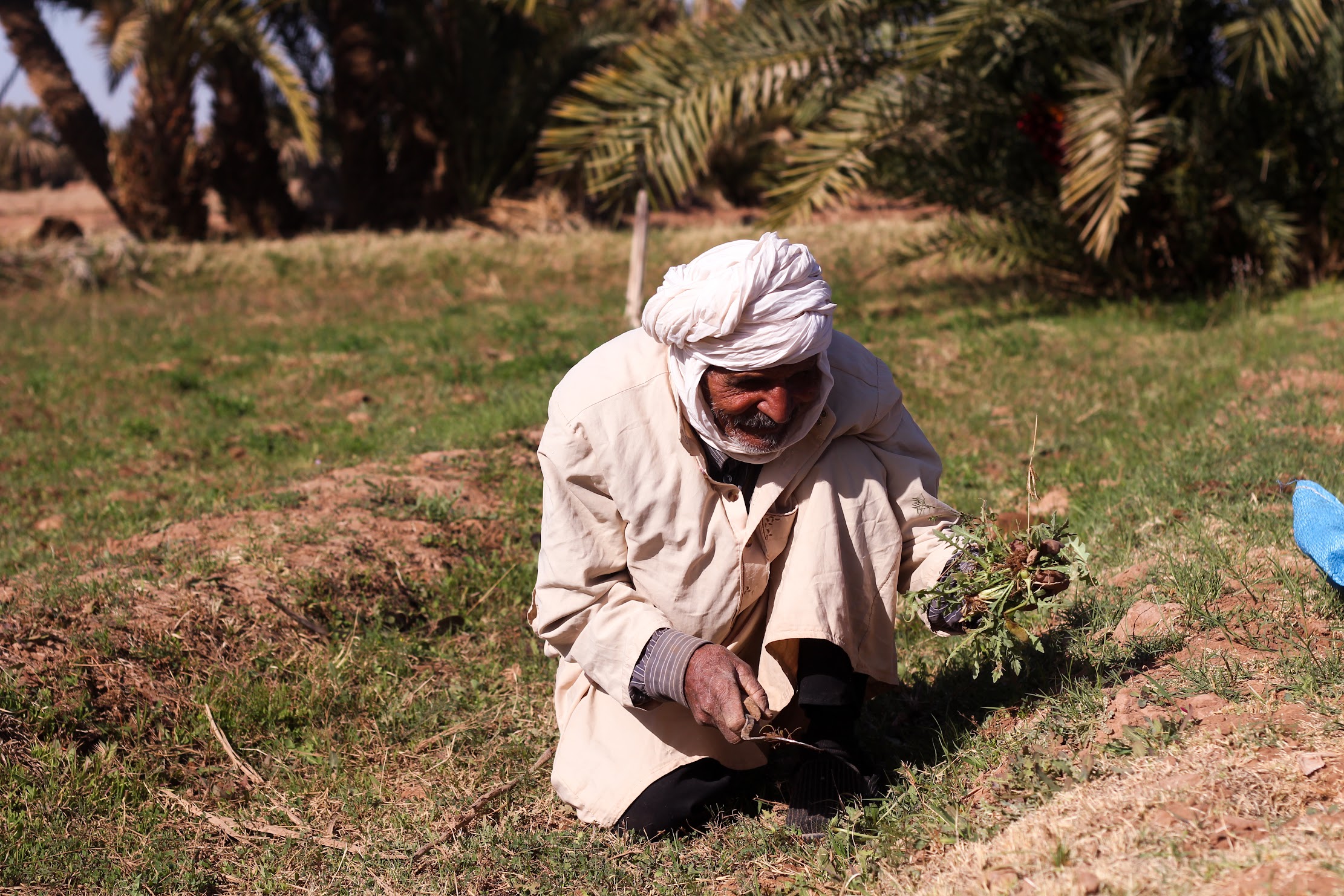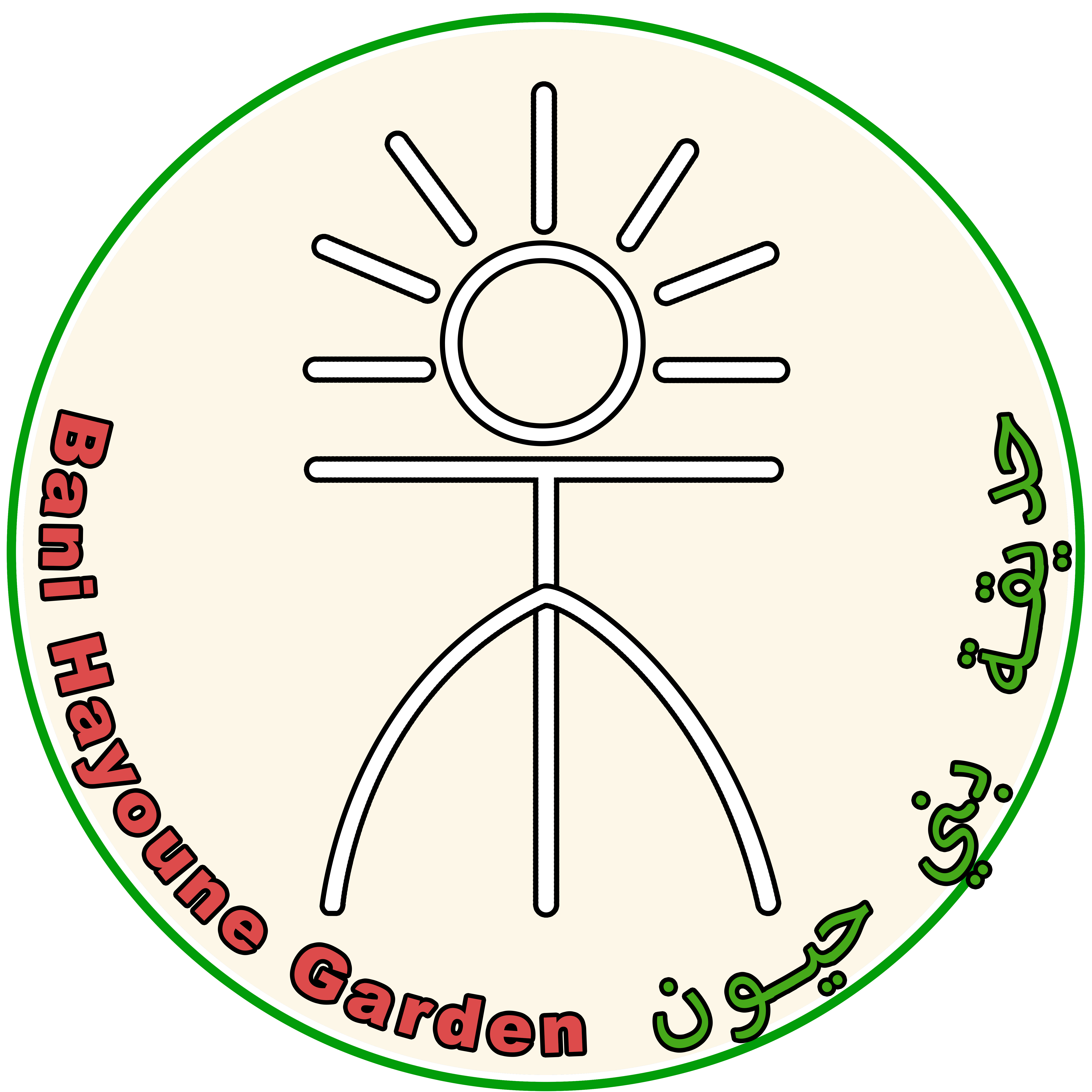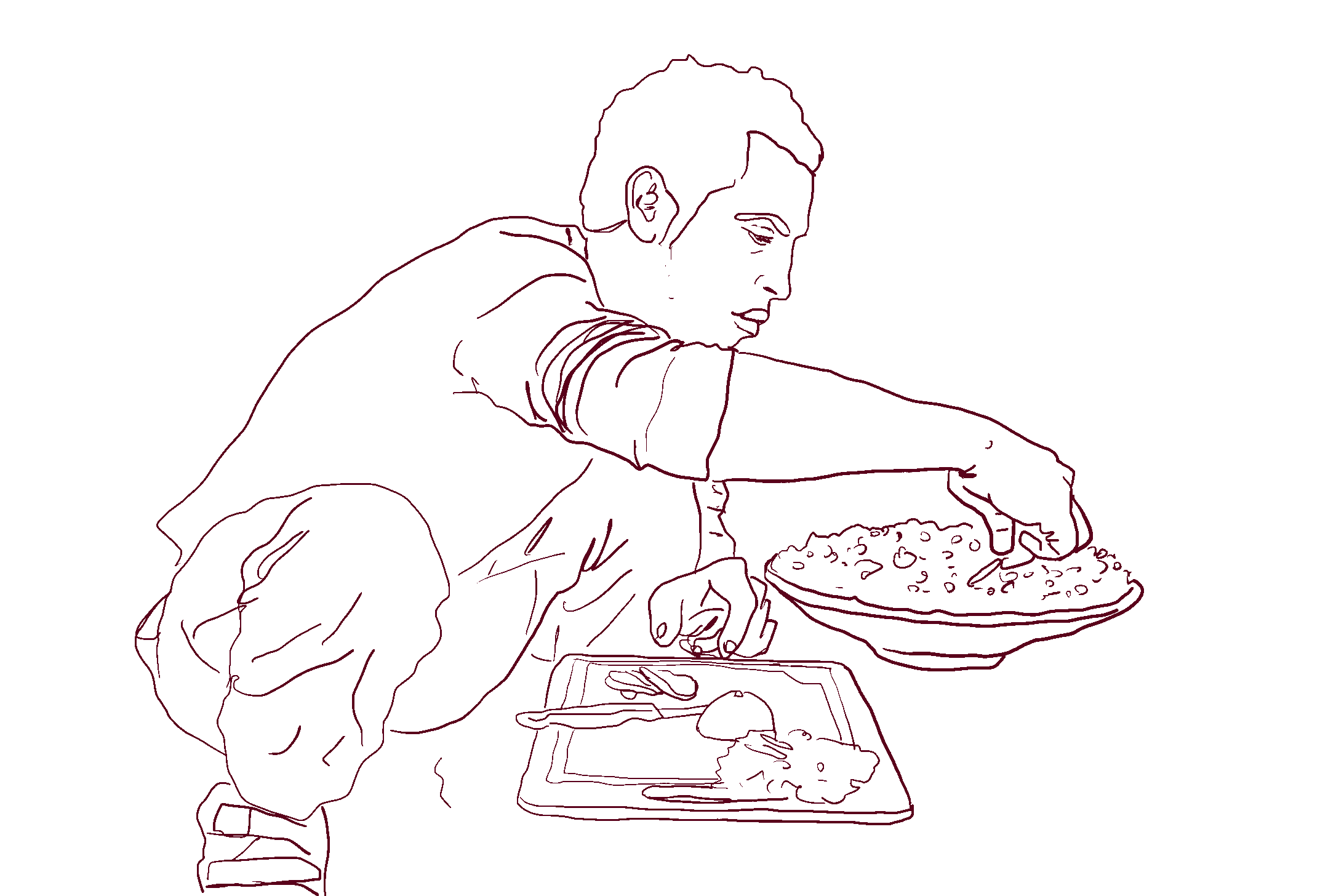 Future vision map
Future vision map reforestation
The plot of land where our project takes place is 1.2 hectares. Here we want to create a food forest to bring life back to an almost completely dried out area, and thus take a step in combating desertification.
By doing this we contribute to the transition to more biodiversity and climate resilience. Working with permaculture principles adapted to the desert climate, we want to take action in the reforestation of the desert and thereby be a hopeful example for the local population. more than a family home
The old family home has been partially restored with natural materials and changed from an abandoned ruin into a livable place. For year Said’s father Mohamed has been harvesting grass for his animals daily and took care of the old date palms in our garden. Sometimes the family grows wheat for bread and, depending on the amount of water in a year, they harvest dates. In this dry part of Morocco with mostly salty earth, our piece of land has uniquely fertile soil, which holds the potential to transform the barren place into a productive oasis. Great progress has been made and plenty of work is still to be done. Together with local workers and volunteers we aim to build a well, install solar panels, create irrigation systems, plant many seeds and trees and grow organic food for the whole community.
drought
Morocco is a very diverse country in its climate and nature. In the north can be a lot of rainfall, even floods, and during winter a big amount of snow falls in several parts of the kingdom. The southern part, in which also the Sahara desert starts, is mostly consisting of rocks, sand and big, gradually dying palm oases. It rains only few days a year and the sun shines very strong every day. Every year temperatures are rising more - it can get over 55 °C in summers - and each year there is less rain. Then there is the Daraa river, the longest river of Morocco, that is approximately 97% of the year completely dry.In 1971 the Al Mansour Eddahbi dam has been built in Ouarzazate, a fast growing city below the Atlas mountains. In the 2010s a second dam was built in Agdz. These dams keep all the melted snow and rain water in large reservoirs and block it from running to the southern part of the country. As a result many people are cut off from this natural water network. Only when it has rained so much that both reservoirs become full, the dams are opened and the water can slowly reach the south. Nowadays this happens roughly once per year: the whole Daraa valley depends such a happening.
desertification
The impact of the Sahara desert is big. Sand is moving quickly and covers fertile lands. Huge watermelon fields consume all the water and leave local farmers with less and less underground water. Water sources are drying up and palm trees are dying. Nomads who have had the Sahara as their home for centuries and have always found food and water for their animals in the desert, are now forced to find a new life in the villages, cities or even outside the country. For many people such a move is unaffordable and impossible and they are therefore tied to this region. Nomads sell their animals and have just enough money to settle in houses that remain within tribes for centuries. On the other hand, more and more people move away from the ancient villages. As a result, the enormous flow of climate refugees is increasing. We have an obligation to find sustainable solutions and care for the next generations.

Sandstorms are common here during the seasonal transitions.
native trees
Planting trees helps restore the water cycle. Trees release water vapor that helps create clouds and rain, and their roots help water seep into the soil and recharge groundwater. Once the well has been built, we can immediately start working on our garden plan. We will start by planting a lot of 4-6 year old date palms. More palms, turza, carob and acacia trees will be brought into the garden as they are good surviving desert trees and can give plenty of shade and nitrogen to the land and soil. Olive, fig and pomegranate will follow next, together with well-surviving climbing plants and flowers such as bourgainvilles, that give shade and grow well in this hot climate. plant nursery
We already grow a few old date palms in our garden, planted by Saids ancestors. They provide shade and dates. Without sufficient water these palms will get ill and eventually die. Every year our date harvest deteriorates. With a well, we can keep the palms alive and provide good dates again. After growing enough healthy seedlings from the palms, we will make a start in setting up a plant nursery and make sure the local people have a direct and affordable access to healthy young trees.



water-recycling systems
The plan is to have efficient irrigationsystems installed within the whole garden. We have been working with basic recycled water systems since the start of the project; soap-free water from the kitchen and bathroom is used for all the small plants and soapy water for the stronger trees. By making a natural waterfilter we can also reuse soapy water for the gardens. Wheat harvest in May 2020
Wheat harvest in May 2020organic food
Most of the food available in the shops in the area is not organic, becomes more expensive every month and is supplied from far away. By growing organic fruits,
vegetables, wheat and rye, we hope to get out of the polluting circle and encourage people in the area to do the same. To be self-sufficient becomes more and more necessary and will soon be the only way for people to continue living in this part of the world. We hope to inspire others and to build a community of local produce that can be shared. Flowers from the male date palm tree, used to pollinate the female date palms
Flowers from the male date palm tree, used to pollinate the female date palms Making a fertiliser from donkey poo, ash, coffee, eggshells and hay, 2023
Making a fertiliser from donkey poo, ash, coffee, eggshells and hay, 2023












underground waterveins
Together with a specialist, we discovered that the piece of land contains a couple of valuable underground aquifers. When a well is dug, the water will be easily reached and there will be enough water to use for growing trees and keeping the already existing palms alive. Why are the waterveins under this land so precious? Because unlike many other waterveins in this region, it is not just a small reserve that can run empty; we discovered a large underground river, with the size of 14 m3 running between two layers of flat rocks. This means the water will stay preserved under our land and the reserve has a lot of water to give.As the desertification is a severe problem in this area, we are working hard on a plan to make a sustainable garden, where trees and plants can support each other and help recharge the groundwater. Our plan is to create a food forest that is well adapted to the desert climate & phenomena. This way we can keep this area a livable place and restore the oasis life - birds, insects, self-harvested organic and fresh products and lots of healthy fresh air - to this dry region.


Desertification of the valley of Tagounite & surrounded villages in 2023

